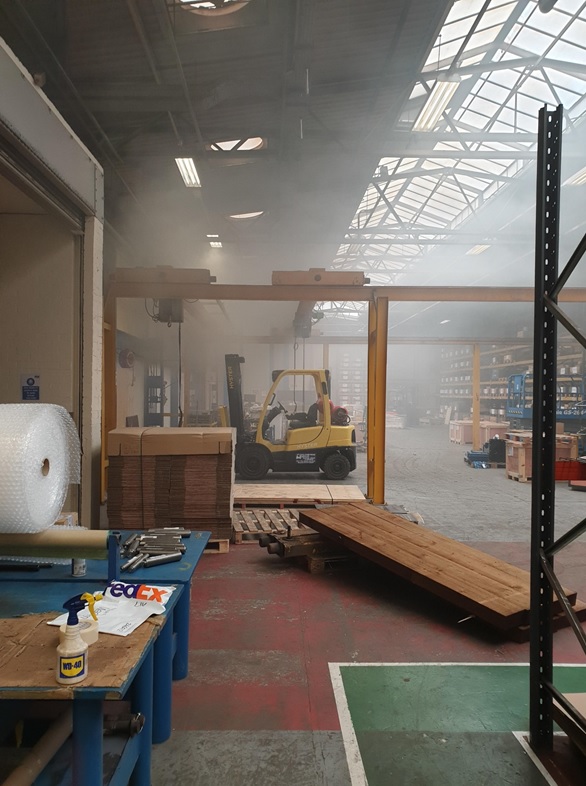Picture This: Hazards of Working Alone
What do you see in this picture that could be dangerous if you were working in this space, particularly if you were alone?
There are several unsafe conditions in this image that could be harmful to any worker, but especially a lone worker. Use the Picture This to spark discussion about the hazards of working alone and the precautions and procedures your organization has in place to protect lone workers. Here are a few observations to get the discussion started.
| 1. The “fog” of an unknown origin settling in over the area. Is it smoke from a fire? Exhaust from a vehicle? Vapor from an accidental chemical reaction of two spilled materials? | ||||||||||||||||||
| a. If you were alone in here and the “fog” started to appear what would you do? Continue to work? Try and find the source? Open a window? | ||||||||||||||||||
| b. What in your work area could create a hazardous atmosphere? Think about chemicals, working in a confined space, potential sources of exhaust, working from heights, etc. | ||||||||||||||||||
| 2. The propane-powered forklift could also cause a hazardous atmosphere – one that’s not visible like the “fog”. If you were working alone operating the lift or repairing the lift while it was running (not the best idea in most circumstances) there’s a chance you could be overcome by carbon monoxide before you realized what was happening. According to a blog post by ProLift Equipment: | ||||||||||||||||||
| a. It’s easy to forget propane powered forklifts produce carbon monoxide gas because the output is normally very low. However, the levels can be greatly affected by dirty air filters, engines needing tuning and fuel systems requiring service or adjustment. The age of a forklift also matters. An older forklift – no matter how well tuned and serviced – produces higher output percentages compared to a newer forklift’s engine. | ||||||||||||||||||
| b. A recent model of a propane powered forklift will produce as low as .5% CO exhaust gas concentration when tested at its tailpipe. This results in 5,000 Parts per Million (PPM). | ||||||||||||||||||
| i. If the forklift is an older model or poorly maintained, the tailpipe output percentage could be as high as 2-4%. | ||||||||||||||||||
| ii. This output would produce CO levels at 20,000 – 40,000 PPM. A tremendous air exchange would have to occur to keep the CO levels within safe and compliant levels. | ||||||||||||||||||
| c. The health effects of CO depend on the CO concentration, length of exposure, and an individual’s overall health. CO concentration is measured in parts per million (ppm). | ||||||||||||||||||
| i. Most people will not experience any symptoms from prolonged exposure to CO levels of approximately 1 to 70 ppm, but some heart patients might experience an increase in chest pain. | ||||||||||||||||||
| ii. As CO levels increase and remain above 70 ppm, symptoms become more noticeable and can include headache, fatigue and nausea. | ||||||||||||||||||
| iii. At sustained CO concentrations above 150 to 200 ppm, disorientation, unconsciousness, and death are possible. | ||||||||||||||||||
What other potential hazards do you see? What procedures are in place to protect you and others who work alone, in remote locations off-site, or in out-of-the-way spots on-site?
